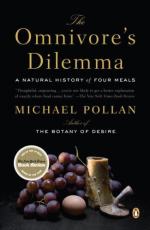
|
| Name: _________________________ | Period: ___________________ |
This test consists of 5 multiple choice questions, 5 short answer questions, and 10 short essay questions.
Multiple Choice Questions
1. What does Pollan admit about the chickens that Salatin sells on his farm?
(a) Smaller size.
(b) Lower quality.
(c) Higher price.
(d) Bigger breasts.
2. _______ was mass produced because of all of the corn that was grown at the time of the alcohol period in the country.
(a) Vodka.
(b) Whiskey.
(c) Rum.
(d) Vermouth.
3. In the early 19th century, Americans were drinking more alcohol, which cause the Alcohol _________.
(a) Boozefest.
(b) Republic.
(c) Economy.
(d) Issue.
4. The pastures are filled with native grasses that actually benefit from ____________.
(a) Fertilizers.
(b) Mowing.
(c) Organic yogurt.
(d) Grazing.
5. The factories from the war time began to produce ________ for farmers to help with their crops.
(a) Fertilizers.
(b) Wheat.
(c) Organic blends.
(d) GMOs.
Short Answer Questions
1. Wallerstein originally worked for a _______ where he learned he could entice people to buy more with larger sizes.
2. As the food companies produced more corn, they create more _________ as it is cheaper than sugar.
3. Salatin pushes for the right to opt out of ____________ of his farm, according to the book.
4. What helps to reduce evaporation in the fields, and help to produce more carbon for the plants in the farm?
5. What is the name of the person who began to take away the programs to help the farmers?
Short Essay Questions
1. What does Pollan point out is the start of any of the foods in the food chain, which came as a surprise to him?
2. What was the role of Earl Butz in the corn industry, according to the book?
3. What does the Salatin farm not need to use because it practices other methods of pest control and fertilization?
4. What did Pollan feel about the meal that he had that was made from all organic foods?
5. What happens during the wet mill process of processing corn?
6. What are three of the benefits to grass farming, as outlined by Pollan?
7. What is the history of Polyface Farm, according to the book?
8. What is another impact of the push for corn in farming, related to another type of industrialized food supply?
9. What does a person need to know in order to succeed with grass farming?
10. Why are the chicken pens slowly moved around the pasture during the day?
|
This section contains 610 words (approx. 3 pages at 300 words per page) |

|




